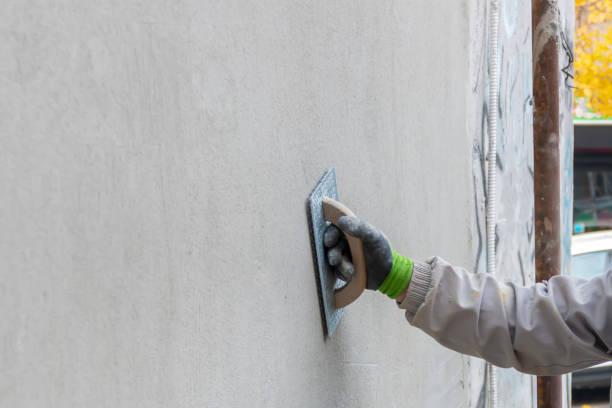Notifications
7 minutes, 16 seconds
-19 Views 0 Comments 0 Likes 0 Reviews

Introduction
Plaster walls have long been a staple in both residential and commercial buildings. While modern drywall has become the go-to choice for many, the timeless appeal of wall plaster is hard to ignore. Whether you're building a new structure or renovating an existing one, understanding the benefits and applications of cement plaster and other types of plastering materials is essential for creating durable, aesthetically pleasing, and functional spaces.
In this article, we will explore the key aspects of plaster walls, wall plaster, and cement plaster, highlighting their advantages, uses, and how they contribute to a building's overall integrity.
What are Plaster Walls and Why Are They Important?
Plaster walls refer to a building surface treatment made from a mixture of water, lime, sand, and other materials. This mixture is applied to the surface of walls to provide a smooth, hard, and durable finish. While wall plaster and cement plaster are the most commonly used variants, the choice depends on the specific needs of the construction project.
One of the key reasons plaster walls are still widely used in many buildings is their versatility. Plaster not only provides excellent durability but also enhances the acoustic properties of a room, making it an excellent choice for soundproofing. Additionally, plastering allows for more artistic designs, offering texture and finish options that drywall cannot replicate.
Benefits of Plaster Walls
Durability and Strength
Plaster walls are incredibly strong and durable compared to drywall. Unlike drywall, which can be easily dented or punctured, plaster walls are resistant to impact, making them ideal for areas that experience high traffic or need to withstand the test of time.
Thermal Insulation
Cement plaster is known for its natural ability to retain heat, which can help in improving energy efficiency. This characteristic is especially valuable in colder climates, where insulating walls can contribute to maintaining a comfortable indoor temperature.
Acoustic Performance
Plaster's denser composition provides excellent soundproofing qualities. If you are looking to reduce noise from external sources or between rooms, wall plaster is an excellent choice.
Types of Wall Plaster Materials
When discussing wall plaster, it’s essential to understand that there are different materials available, each with its own set of benefits. The two most common types are cement plaster and traditional lime-based plasters. Let’s dive deeper into each type.
Cement Plaster – The Modern Solution
Cement plaster is one of the most popular choices in the construction industry. It is made by mixing cement, sand, and water, and sometimes, chemical additives to improve workability. The benefits of cement plaster include its strong bonding ability, resistance to weathering, and low maintenance.
Unlike other plastering options, cement plaster can be applied in various thicknesses, making it versatile for different types of surfaces. It’s particularly advantageous in exterior applications, as it provides excellent protection against harsh weather conditions.
Lime Plaster vs. Cement Plaster
While cement plaster is known for its durability, lime plaster (another form of wall plaster) offers unique benefits as well. Lime plaster is more breathable, which means it allows moisture to escape from walls, preventing dampness. This makes it a popular choice for historic buildings or homes that are prone to moisture issues.
In contrast, cement plaster is not as breathable, but it excels in strength and can withstand rougher treatment. The choice between lime and cement plaster ultimately depends on the specific needs of your building, with cement plaster being more suited for modern, high-traffic applications.
How to Apply Plaster Walls for Maximum Durability
To ensure that your plaster walls last as long as possible, proper application is key. Here are some important tips for applying plaster successfully.
Surface Preparation
Before applying plaster walls, it’s important to ensure that the surface is clean and smooth. This may involve removing any old paint, dust, or debris that can affect adhesion. Proper preparation will ensure that your wall plaster bonds securely and provides a long-lasting finish.
Mixing and Application Techniques
Whether you are using cement plaster or traditional wall plaster, mixing the right proportions of ingredients is crucial for a successful application. Always follow the manufacturer’s guidelines for mixing, and consider hiring a professional plasterer if you lack experience with this type of work. Applying the plaster in thin, even layers will help ensure a smooth, flawless finish.
Drying and Curing
After applying the plaster, it is important to allow it to cure properly. This ensures that the material gains its full strength and durability. Cement plaster may require several days to cure completely, depending on the thickness of the application and environmental conditions.
Conclusion
Plaster walls remain a valuable option in construction, providing exceptional durability, thermal insulation, and soundproofing benefits. Whether you choose wall plaster or cement plaster, understanding the different materials and their applications is key to achieving long-lasting, high-quality results. As with any building material, proper installation and maintenance are critical for ensuring that your plaster surfaces stay intact and continue to enhance the aesthetic and functional qualities of your home or building.

